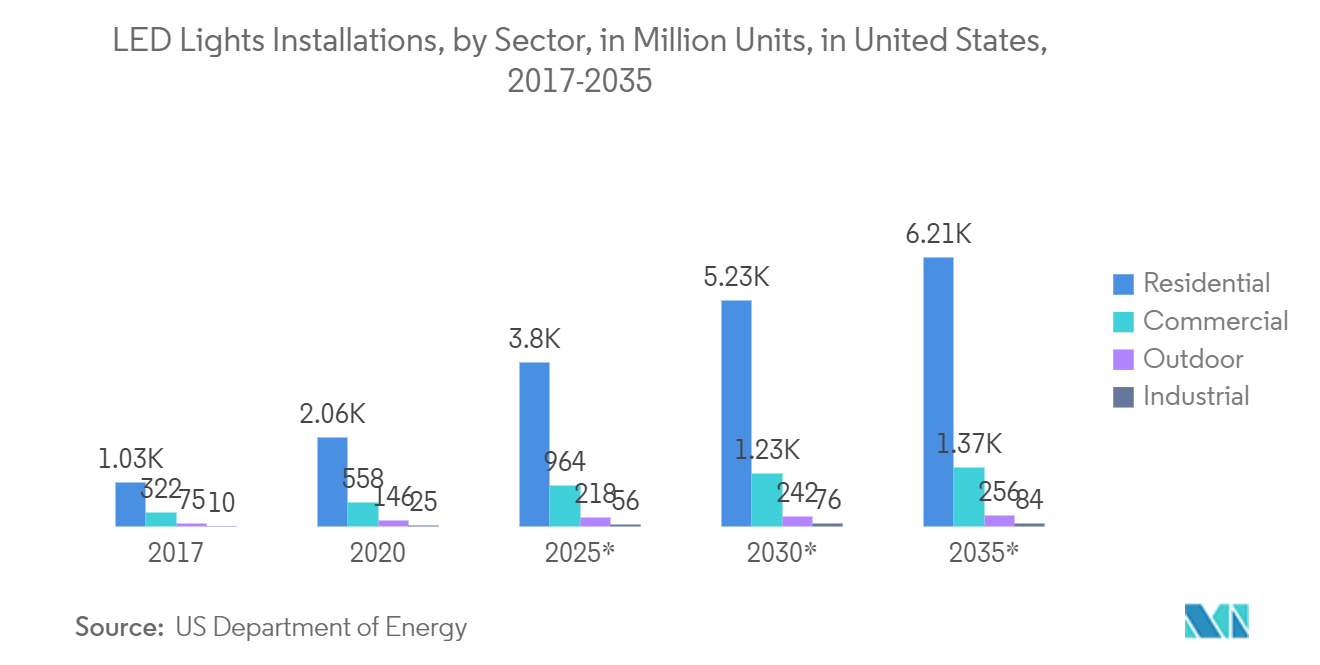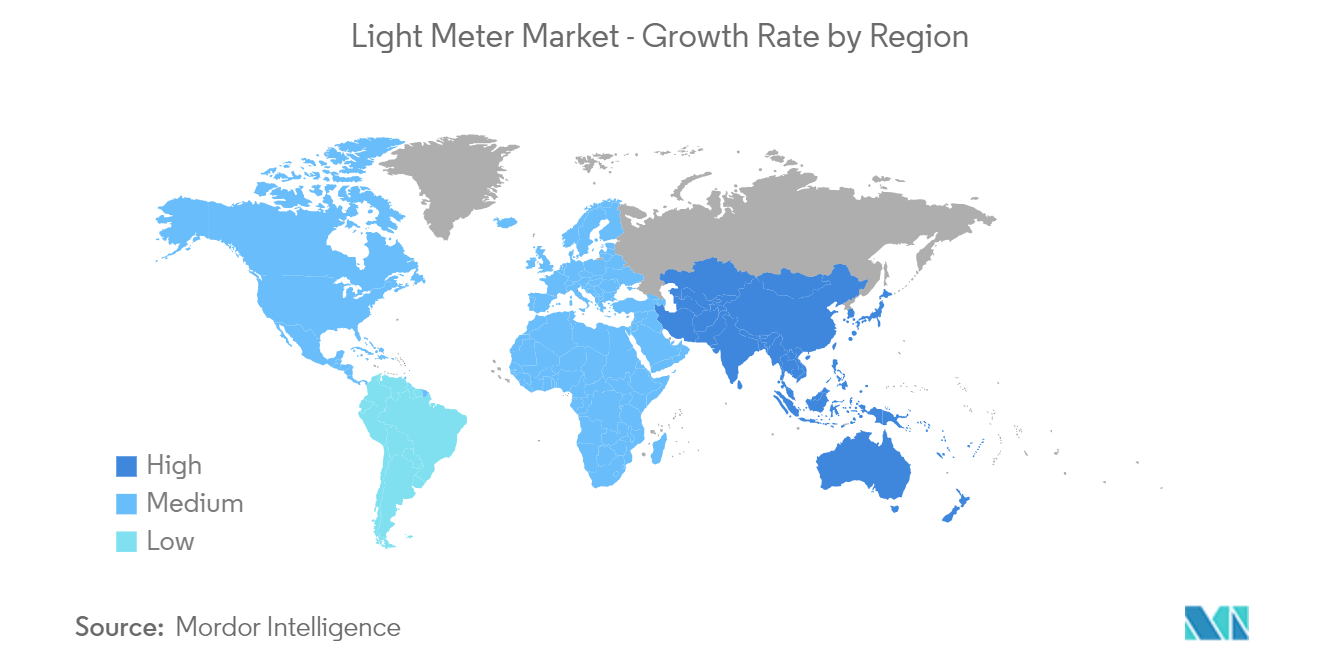Market Trends of Light Meter Industry
LED Type Light Meters Segment is Expected to Hold Significant Market Share
- LED light meters are used in quality control and testing processes while manufacturing LED lights. Manufacturers use these meters to verify that each LED diode and lighting fixture meets the specific criteria for color temperature, color rendering index (CRI), luminous flux, and other parameters.
- The LED light meters are designed to overcome the problem of erroneous results by using specific algorithmic calculations to measure the LED light spectrum, which may not necessarily fall within the CIE Photopic curve. A light meter can check LED lights to ensure they fall into the desired range for minimal disruption to life.
- These Light meters are essential for measuring the color temperature of LED lights. This measurement helps ensure that LED lighting systems emit light with desired color characteristics, whether it's warm, cool, or daylight-like. Color temperature plays an important role in creating the required light ambiance.
- Moreover, The LED light meters can assess photobiological safety by measuring the potential hazards of LED lighting, such as blue light exposure. Ensuring LED lighting is safe for human health is crucial, especially in settings like healthcare and manufacturing plants.
- The increase in the number of LED lights installed has been significant drives the market growth. LED light meters are essential tools for measuring and assessing various parameters associated with LED lighting. According to the US Department of Energy, The number of LED light installations in the United States is forecast to grow between 2017 and 2035, increasing from about 1.4 billion units installed in 2017 to about 7.9 billion units in 2035. However, the residential sector would grow the most LED light installations in 2025. The outdoor sector should have the highest penetration rate of LED lights.

North America is Expected to Hold Significant Market Share
- The North American light market is witnessing a significant shift towards energy-efficient light technologies. Light meters are crucial in ensuring that these lighting systems operate at their optimal levels, contributing to energy savings and sustainability goals.
- The increasing number of smart cities and the integration of IoT technology in urban infrastructure have driven the demand for light meters. According to The Economist, In 2022, the leading global digital city on the index ranking score of Washington, DC is 71.2. They are crucial in optimizing outdoor lighting in smart cities to improve energy efficiency and safety.
- North America region has a thriving photography and film production industry, and light meters are essential for professionals in these fields to achieve precise lighting conditions and exposure settings for their work.
- Federal and state-level government initiatives promoting energy efficiency and sustainability have encouraged the adoption of LED lighting and, consequently, the use of light meters to verify lighting performance.
- Advancements in light meter technology have led to the development of digital and wireless light meters, making measurements more convenient and efficient for users. The digital transformation of industries has led to increased interest in connected lighting systems that can be monitored and controlled remotely.


